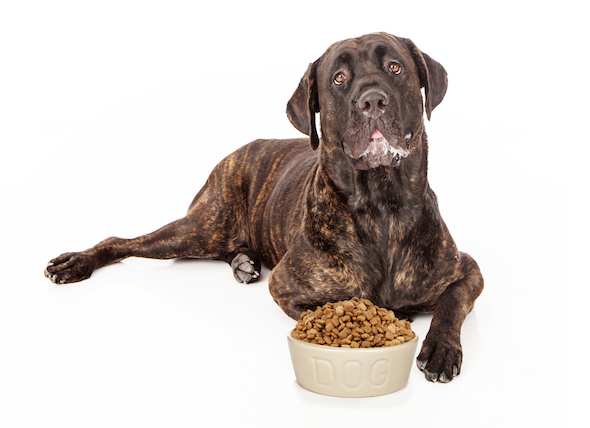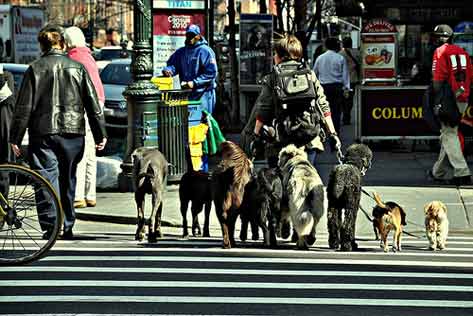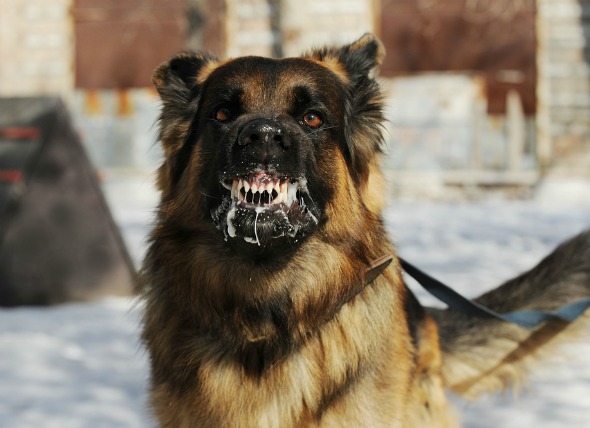When dogs used to live in the wild, they needed a bolt hole for their own protection and peach of mind.
Throughout the years even though many breeds of dogs have been domesticated, they are still den animals and have a strong natural instinct to seek out a small, cosy place to rest for shelter and security. It is a place to make your dog or puppy feel safe, something to protect its back and yet still allows it to look around.
When used properly, crates are the fastest and most humane method of housebreaking dogs. Training a dog to use a crate encourages him to keep its home clean" and never want to eliminate in its own bed. This can really aid toilet-training. How it works is that a crate acts on a dog's instinct to keep its den clean and unsoiled.
Keeping your dog in a crate teaches him to "hold it" until he can go in an appropriate place, which helps your puppy develop his bladder control. A crate also promotes happiness in your dog as it feels secure and safe in its own home", therefore reducing behavioural problems such as excessive barking and chewing. A crate can also help break bad habits that improperly trained dogs may have developed over the years.
For older dogs, a crate functions as a "bedroom" where they can relax and escape the hustle and bustle of kids, other pets, and everyday family life.
Fabric, Metal or Plastic?
A lightweight fabric soft dog crate is suitable for crate-trained dogs. However they are not suitable for chewers, aggressive or nervous dogs. Plastic kennels are good for dogs that travel a lot and are generally the only method of containment accepted by airlines. Metal wire dog crates are ideal for home use.
They generally provide more room for the dog. They're also sturdier, so should be able to stand up to your dog's movement or activity and be able to last as your dog's permanent home".
Whatever the make and design of the crate model, it should allow for proper ventilation and visibility, is durable and stable, has secure slide bolt latches for your dog's safety, preferably has 2 doors for ease of access, can be folded or set up quickly especially for travel purposes and are well-coated (eg zinc or hard epoxy) for easier cleaning and anti-rust.
What size?
There is no correct size of dog crate for any particular breed. It depends on the size of your dog, the nature of each individual dog, and the amount of space you feel should be sufficient to allow your dog to rest and sleep in it comfortably and safely.
Your dog should be able to stand up straight legs inside the crate, turn around, and lie down in comfort. If the crate is too big, your puppy or dog will have enough room to soil one side and sleep on the other, which defeats the purpose of the crate.
Try to get a crate roomy enough to accommodate your dog's full-grown size and get a divider panel. This way, you can keep using the same crate and have it "grow" along with your dog without upgrading the size several times.
What type of crate accessories can you get?
Toys and treats - always ensure that you have the appropriate toys and treats in the crate to keep your dog occupied and prevent your teething puppy from chewing on the crate's metal bars or plastic panels.
Crate bedding - It is also important to purchase crate bedding for warmth and a crate cover is great for reducing the number of outside distractions your dog sees, which can reduce barking and stress in the crate.
Crate pad a crate pad is more comfortable than the crate's plastic pan.
A protection bumper - a bumper helps protect your puppy from injuries caused by chewing or leaning against the crate's metal bars. This is also suitable for highly active dogs which tend to move around a lot in the crate.

 Lyme Disease in Pets
Tick-Borne Diseases and Your Pet
By Jennifer Kvamm
Lyme Disease in Pets
Tick-Borne Diseases and Your Pet
By Jennifer Kvamm
 Choosing the Best Dog Food
By T. J. Dunn, Jr., DVM
"What is the best foo
Choosing the Best Dog Food
By T. J. Dunn, Jr., DVM
"What is the best foo
 How to Become a Professional Pet Sitter/Dog Walker
Job hunting can be a frustrating task. Ther
How to Become a Professional Pet Sitter/Dog Walker
Job hunting can be a frustrating task. Ther
 Skin Problems in Dogs
By T. J. Dunn, Jr., DVM
What You Should Kno
Skin Problems in Dogs
By T. J. Dunn, Jr., DVM
What You Should Kno
 Aggressive Behavior in Dogs (and Cats): How to Handle this Tough Situation
By T. J. Dunn, Jr., DVM
The following essa
Aggressive Behavior in Dogs (and Cats): How to Handle this Tough Situation
By T. J. Dunn, Jr., DVM
The following essa